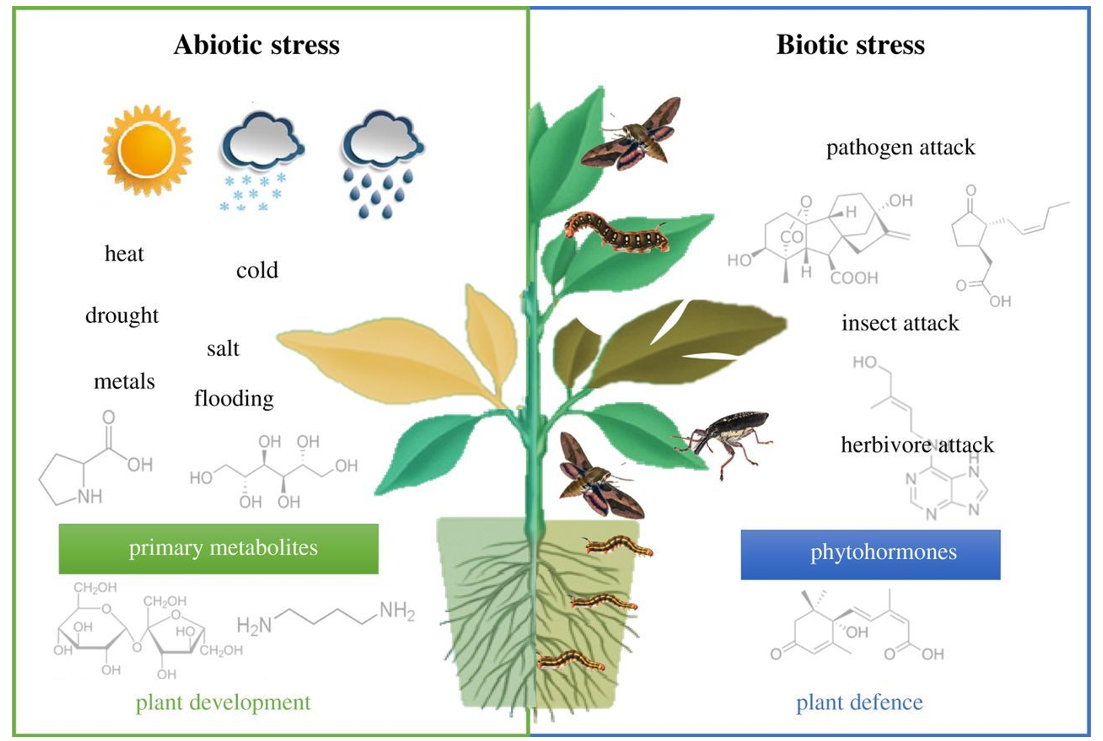Metabolomics is mainly used to determine the molecular composition and regulatory mechanisms that affect the final biological phenotype of organisms by studying the changing laws of various elements in the metabolic network (such as substrates, products, concentration of coenzyme factors, and reaction speed, etc.).
It is very necessary to analyze plant metabolites. Plant endogenous metabolites play an important role in plant growth and development. There are more than 200,000 species of metabolites in plants, which are necessary to maintain plant life activities and growth and development, as well as secondary metabolites that are closely related to plant disease resistance and stress resistance.
The application of metabolomics technology can simultaneously perform qualitative and quantitative analysis of a large number of metabolites. It is often used to observe the changes of metabolites in plants under changing environmental conditions, and can also be used to study the changes in the types and contents of metabolites in different parts of the same plant or in different periods. The corresponding metabolic pathway and metabolic network can also be inferred based on the changes in the amount of associated metabolites.
Metabolic pathway analysis
After systematically studying all metabolites in a certain metabolic pathway, the next step is to describe the metabolic pathway based on finding a series of substrates, products, intermediates and key enzymes of this pathway and clarifying the regulation mechanism and key regulatory sites of this metabolic pathway. It is easy to find the regulatory site by metabolomics methods because the concentration of substrates and key enzymes at this site will change oppositely.
Gene function research
In the past, it took a long time to judge the rise and fall of gene expression levels through visible phenotypic changes, and sometimes gene expression changes could not cause phenotypic changes, but at this time the content of certain metabolites in plants would change. Using metabolomics methods to detect changes in metabolites can determine changes in gene expression levels, thereby inferring gene functions and their effects on metabolic flow.
Integration of multi - omics techniques
Transcriptomics, proteomics, and metabolomics are an organic whole, and they are all important parts of systems biology. Linking the information obtained by the genome, transcriptome, proteome, and metabolome will help to study the response of biological systems to genetic or environmental changes as a whole.
Fluxomics research
In the process of studying metabolic issues, the regulation of genes to metabolites and metabolites to metabolites is achieved by regulating the direction and speed of metabolic flow. Metabolomics studies the flow of compounds in all metabolic networks in a specific organism. Metabolic flux is not a new concept. It was applied to the research of Escherichia coli and other systems to improve the efficiency of metabolic engineering in the early years. It is a quantitative analysis method that expresses the intracellular reaction in the pseudo-steady state with a quantitative matrix model.
Reference
Jorge, T. F., Mata, A. T., & António, C. (2016). Mass spectrometry as a quantitative tool in plant metabolomics. Philosophical Transactions of the Royal Society A: Mathematical, Physical and Engineering Sciences, 374(2079), 20150370.
